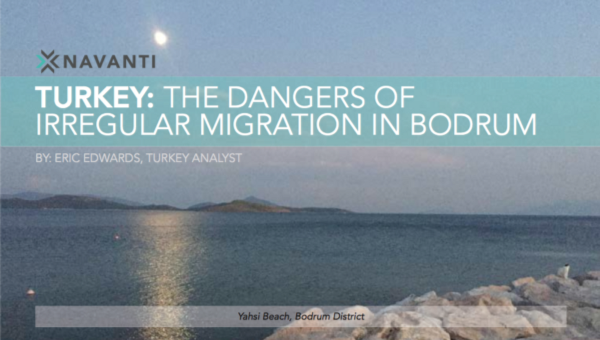
On 22 November 2015, Turkish police recovered the body of a drowned four-year-old Syrian refugee girl named Sena on the rocks of Catalada. This is just two miles from the beach of Akyarlar where a photo of the drowned Alan Kurdi, a two-year-old Kurdish refugee, captured international sympathy in September. The hauntingly similar incidents continue to show the terrifying risks taken by refugees and migrants in the ongoing crisis in Bodrum, Turkey.
>
“Many locals and foreigners are assisting migrants in crossing to Kos, not just organized smugglers. They are earning very good money. Captains or anyone who owns a boat can take migrants to Kos for high prices.”
An estimated more than 100,000 refugees from Syria (as well as migrants and refugees from Afghanistan, Pakistan, and Iraq) have come to Bodrum hoping for a safe trip to the European Union. Although the Paris terrorist attacks have now brought attention to Bodrum as a transit point, thousands fleeing their homes have passed through here since March 2015. Locals report migrants and refugees, especially families, choose Bodrum to cross because it is less than 5 km from the Greek island of Kos. This is one of the narrowest crossings in the Aegean, therefore perceived by migrants as one of the safest.
According to locals and Coast Guard officials, refugees use three main ways to get to Kos and other islands. First, they pay Syrian and Turkish smugglers approximately 1,000–2,000 euros to procure boats, motors, and life vests for the migrants and direct them to isolated coastal departure points, such as the beaches at Akyarlar, Baglar, and Yahsi. Second, to get around smugglers, young refugee men will purchase inflatable boats and attempt to make the journey themselves without the assistance. And third, refugees will pay local fisherman to deposit them near Greek shores while they are out on their normal trawls.
Turkish Coast Guard officials in Bodrum report they are stretched to the limit in terms of manpower and materials to avert migrant drowning tragedies. It is not surprising that the United Nations High Commissioner for Refugees (UNHCR) has estimated the number of migrants drowning in the Aegean Sea will increase in November and December 2015 due to worsening weather and more difficult currents. Unfortunately, it is unlikely Sena will be the last tragedy.

